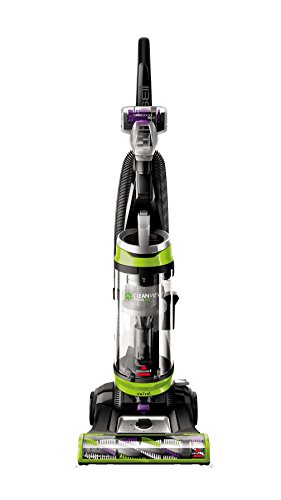Is your Kitchenaid fridge freezing food? There are several possible reasons why your Kitchenaid fridge is freezing food. In this article, we will discuss these reasons and how to fix them.
Table of Contents
Reasons Your Kitchenaid Fridge is Freezing Food
The following are the most common reasons Kitchenaid fridge freezes food. How to identify and solve these problems are also discussed.
1. Leaking Gaskets
The gasket line is otherwise known as the door sealants. It prevents heat transfer between the room environment and the fridge’s internal compartment.
A leaking gasket will result in the fridge doors not being sealed off properly. In which case, the fridge will run continuously and make your food frozen.
To solve this, you need to replace the gasket.
This video will show you how…
2. Low Temperature
Your fridge’s temperature may be too low and that is why your Kitchenaid fridge keeps freezing food. This is a very common reason that can be easily overlooked.
To fix this, you have to set your fridge to the ideal temperature for fridges. This is usually between 38°F and 42°F.
Kitchenaid fridge’s thermostat dial is often located inside the fridge, just at the top. If your fridge has a digital display, then setting the temperature to the right degree will be easier.
Ensure that your temperature is set to F instead of C.
If you are looking for more reputable refrigerator brands, we recommend Frigidaire. Check out this Frigidaire fridge model below.
[amalinkspro type=”showcase” asin=”B088GVQX34″ apilink=”https://www.amazon.com/dp/B088GVQX34?tag=refrigeratorsreviewed-20&linkCode=osi&th=1&psc=1″ new-window=”true” addtocart=”true” nofollow=”true” sc-id=”6″ imgs=”LargeImage” link-imgs=”false” specs=”” btn-color=”#ff9900″ btn-text=”Click Here to Buy yours Now!” alignment=”aligncenter” hide-prime=”0″ hide-image=”0″ hide-price=”0″ hide-button=”0″ width=”600″]Frigidaire EFR341, 3.2 cu ft 2 Door Fridge and Freezer, Platinum Series, Stainless Steel, Double[/amalinkspro]
3. Coils are Dirty
The coils have an essential part to ensure the fridge maintains the right temperature. When the coils are dirty, it forces the fridge to work harder than it is supposed to. This is a very common problem with fridges.
This problem can be easily solved by cleaning the coils. Follow the steps below to do this.
i. To ensure safety, make sure you turn off the fridge and disconnect it from the power source.
ii. Adjust the fridge to a position that allows you easy access to the coils. The coils are often located behind the appliance.
iii. With a vacuum or soft brush clean the coils as best as you can.
iv. Turn the fridge back on.
 [amalinkspro type=”cta-btn-css” ctabtn-id=”” asin=”” apilink=”https://www.amazon.com/dp/B07F6N3RT6?tag=refrigeratorsreviewed-20&linkCode=osi&th=1&psc=1″ addtocart=”false” new-window=”false” nofollow=”true” alignment=”aligncenter”]Click Here to Buy Yours Now![/amalinkspro]
[amalinkspro type=”cta-btn-css” ctabtn-id=”” asin=”” apilink=”https://www.amazon.com/dp/B07F6N3RT6?tag=refrigeratorsreviewed-20&linkCode=osi&th=1&psc=1″ addtocart=”false” new-window=”false” nofollow=”true” alignment=”aligncenter”]Click Here to Buy Yours Now![/amalinkspro]
4. Broken Damper
A damper is found only in fridge freezer units. So if your Kitchenaid fridge freezer is freezing food, this may be why.
The damper regulates the air that flows from the freezer to the fridge. It does this by opening and closing periodically to allow cold air to enter the fridge from the freezer.
A faulty damper may get stuck open and allow too much cold air into the fridge.
To know if your damper is broken, you need to remove the damper control assembly and visually inspect the damper.
To do this:
i. Locate the damper control assembly in your fridge and use a screwdriver to loosen all screws attaching it to the fridge.
ii. Disconnect any wire connected to the fridge and damper control assembly.
iii. Take out the damper control assembly. The damper will be accessible to you from this point.
To replace it, simply remove all wire harness connected to it, and take it out. Put in the new one, connect the wires back, and reattach the assembly to the fridge.
5. Food Placement
The air vents supply cold air to the fridge. You may be storing your food close to the air vents and that is why they get frozen.
So store your food away from the air vents. Also, some types of foods should be stored in designated areas, like your eggs and vegetables. Ensure eggs are stored higher up, and vegetables are placed in vegetable compartments.
6. Malfunctioning Thermostat
The function of the thermostat is to ensure the fridge maintains the desired air temperature. It does this by periodically turning the fridge on and off.
A malfunctioning thermostat may cause the fridge’s refrigerant system to overwork. This will cause the fridge to be colder than desired.
If you listen closely, you will hear a low hum that indicates the fridge is running. Normally, the fridge has to run for a few minutes to get to the optimal temperature. At which point it will shut off for a while and then restart operation.
However, if you listen and your fridge keeps running nonstop for an hour or more, the thermostat may be bad.
If the thermostat is faulty, then you need to replace it.
Check out these other articles…
- Kenmore Refrigerator Dispenser Problems [Solved]
- Midea Freezer Not Freezing [How to Fix]
- Maytag Fridge Freezing Food [Solved]
- Daewoo Freezer Not Freezing [How to Fix]
- Samsung Fridge Freezing Food [How to Fix]
- LG Fridge Freezing Food [solved]
- Beko Freezer Not Freezing [Solved]
How to Replace a Kitchenaid Fridge Thermostat Control
To replace the thermostat control of your Kitchenaid fridge, do the following:
Step 1: Remove the shelving and screws; then take out the damper covers and conduit.
Step 2: Remove the sensor of the thermostat from the damper and remove the control panel.
Step 3: Remove all the wires connected to the thermostat
Step 4: Take out the old control thermostat from its housing and insert the new one.
Step 5: Place the insulation of the old control thermostat on the new one.
Step 6: Put back the control panel, plug back all the wires and screws.
Step 7: Replace the damper covers and conduit in position and tighten the screws back on.
